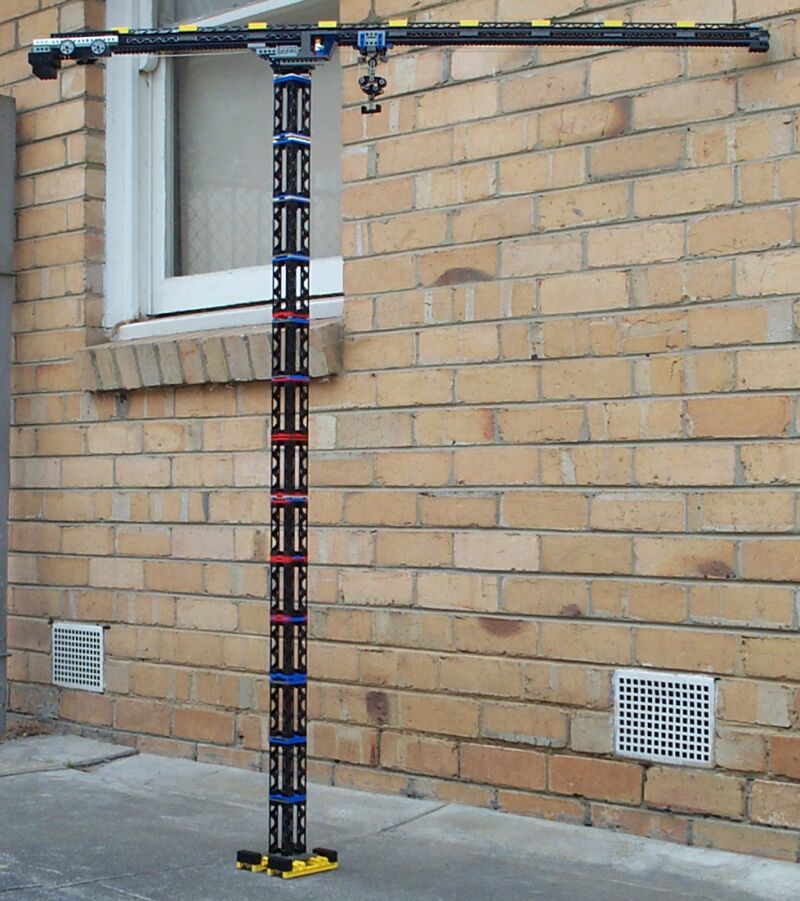|
Ross Crawford / projects / citycrane | |
| Rosco’s LugNet Page These pages are no longer updated. You can view my LEGO related pages here. All images hosted by Brickshelf L.L.C. but who knows how long that will last. Minifig-scale City Crane 
Well, continuing along my line of minifig cranes, here is my latest. It’s a tower crane, of a type generally called “city crane” around here. They’re designed to be easy to erect (compared with larger tower cranes) and to provide lifting of smaller loads over a large area. Often used in the construction of city buildings, they have a very small footprint. This is a pretty simple model, but there’s a couple of interesting features: Travel mechanism The travel is controlled by two separate spools. They can be operated separately by disengaging a clutch between them, or linked by engaging it. The travel spools are the two on the right with dark cable - you can see the clutch between them. 
This allows the crane to be more easily set-up and dismantled - when setting up, the spools can be operated independently, allowing the two cables to be run and attached separately. It also simplifies the task of assembling cranes with different length booms. When dismantling the spools can be independently wound. Hook mechanism The hook mechanism is also interesting, as it allows changing between 2 and 4 part line without re-reeving. These 2 pictures show how it works:  
The auxilliary block can be attached to or detached from the main hook block by a single pin, switching between 2 and 4 part. This idea relies the on main hook block being significantly heavier than the auxilliary one. This technique is used fairly commonly in tower cranes such as this - and even expanded upon on larger cranes like the Kroll K-10000. Note also that the auxilliary block can be attached the opposite way - with the cable running over the top of it between the 2 hook sheeves. This is actually how it was implemented in the crane I used as a prototype, but would have required a much wider and even more clunky looking hook block. The hook is converted from 4 to 2 part like so: This procedure is reversed to convert it back to 4 part. Anyway, the rest of the crane is fairly basic, so here’s some general pictures: Site last modified November 4, 2004 Home
|
|
Primary content in this document is © Ross Crawford. All other text, images, or trademarks in this document are the intellectual property of their respective owners. |
| |
©2005 LUGNET. All rights reserved. - hosted by steinbruch.info GbR |